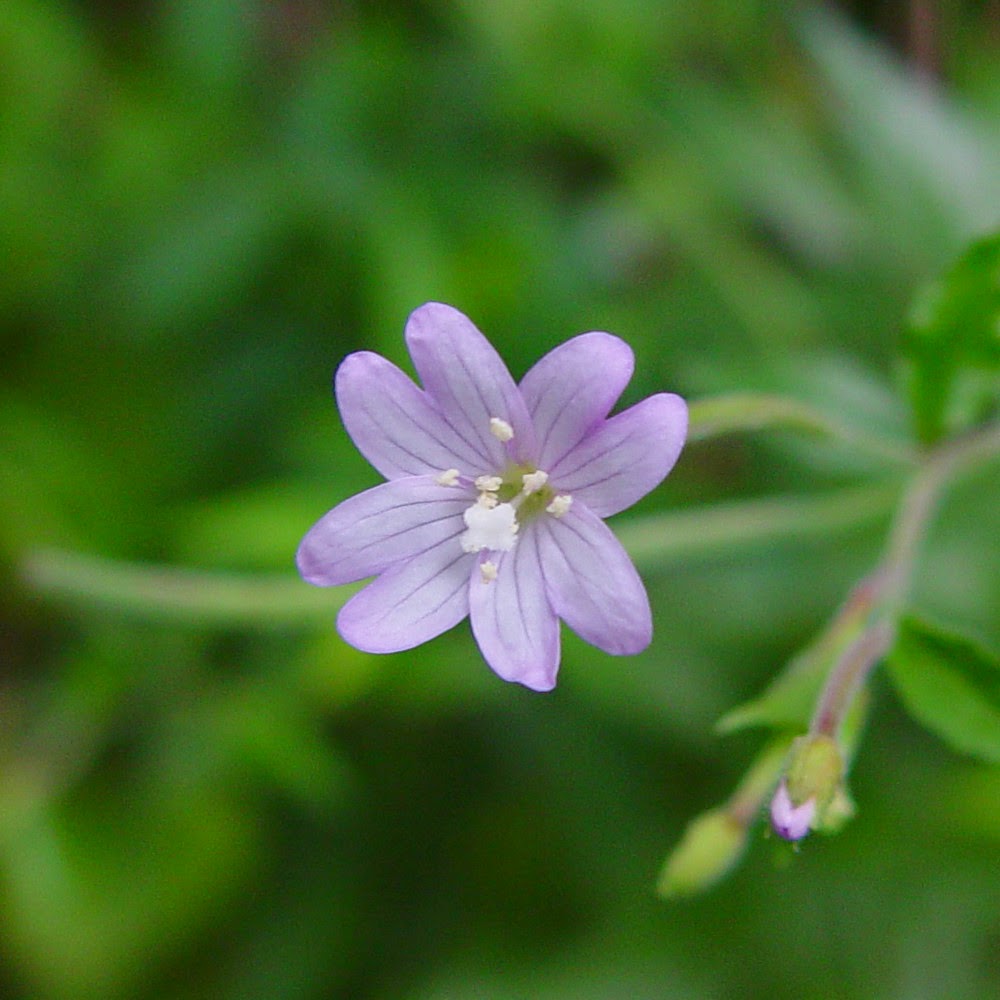Fringed willowherb
(Epilobium ciliatum ciliatum)

Description
Epilobium ciliatum ciliatum, commonly known as the fringed willowherb, is a herbaceous perennial plant belonging to the Onagraceae family. This resilient plant is primarily found in wetland habitats, displaying remarkable adaptability to varying environmental conditions. In this guide, we will delve into the intricate details of Epilobium ciliatum ciliatum, exploring its taxonomy, morphology, distribution, ecological significance, and cultivation. Taxonomy Epilobium ciliatum ciliatum is a subspecies of Epilobium ciliatum, a species within the broader Epilobium genus. The genus Epilobium encompasses over 160 species of flowering plants distributed across temperate regions of the world. The specific epithet "ciliatum" refers to the fringed or hairy margins present on the leaves and stems of the plant. This distinct characteristic sets it apart from other species within the genus. Morphology The fringed willowherb possesses a robust and erect stem that can reach heights of 30 to 120 centimeters (12 to 47 inches). The stem is covered with fine hairs, which lend it a velvety texture. The leaves of Epilobium ciliatum ciliatum are lanceolate in shape, measuring 3 to 10 centimeters (1.2 to 3.9 inches) in length. These leaves are characterized by their serrated margins and prominent veins. The margins of the leaves and stems are adorned with delicate hairs, giving rise to the common name "fringed willowherb." The inflorescence of Epilobium ciliatum ciliatum consists of numerous small, pink to purple flowers that bloom in elongated racemes during the summer months. Each flower has four petals and four sepals, with eight stamens surrounding the central pistil. These vibrant flowers attract pollinators such as bees and butterflies, playing a crucial role in the reproductive success of the plant. Distribution and Habitat Epilobium ciliatum ciliatum is primarily distributed in wetland habitats of North America. Its range extends from Alaska and British Columbia in Canada, down to California and Colorado in the United States. This subspecies can be found in various states and provinces within this range, including Washington, Oregon, Idaho, Montana, Wyoming, Nevada, Utah, and Arizona. It is important to note that while Epilobium ciliatum ciliatum has a relatively broad distribution, its occurrence within this range can be patchy and localized, as it is influenced by specific environmental conditions and suitable wetland habitats. Ecological Significance Epilobium ciliatum ciliatum plays an important ecological role in wetland ecosystems. Its extensive root system aids in water retention, preventing excessive runoff and reducing the risk of soil erosion. The plant's dense foliage provides shade and shelter for various small animals, while the flowers serve as a nectar source for pollinators. Additionally, the seeds of Epilobium ciliatum ciliatum are an essential food source for numerous bird species, contributing to the overall biodiversity of wetland habitats. Cultivation and Garden Use For enthusiasts interested in cultivating Epilobium ciliatum ciliatum in their gardens, it is important to replicate its preferred wetland conditions. This species thrives in moist to wet soil with good drainage. It can tolerate both full sun and partial shade, although it may flower more abundantly in sunnier locations. Propagation can be achieved through seeds or by dividing mature clumps in early spring or fall. To create an ideal habitat, prepare the soil by incorporating organic matter and ensuring it remains consistently moist. Regular watering is essential, particularly during dry spells. While Epilobium ciliatum ciliatum can tolerate periodic flooding, it is crucial to avoid waterlogged conditions, as this may lead to root rot and other fungal diseases. In terms of maintenance, the fringed willowherb requires minimal care once established. However, it is recommended to remove any dead or faded flowers to encourage prolonged blooming and prevent self-seeding. Regular monitoring for pests and diseases is also advisable, although Epilobium ciliatum ciliatum is generally resistant to common garden issues. Beyond its ecological value, Epilobium ciliatum ciliatum can be a visually appealing addition to gardens and landscaping projects. Its upright growth habit and attractive flowers make it suitable for borders, meadow-style plantings, or rain gardens. It can also be used to stabilize slopes and prevent soil erosion in areas prone to water runoff. Furthermore, the fringed willowherb has a rich history of medicinal and herbal uses. Some indigenous cultures in North America utilized various parts of the plant for its astringent, anti-inflammatory, and wound-healing properties. While further research is necessary to validate these traditional uses, it highlights the cultural significance and potential therapeutic benefits associated with Epilobium ciliatum ciliatum. Conservation Status Epilobium ciliatum ciliatum is considered a species of least concern in terms of conservation status. It has a wide distribution and is generally not threatened by human activities or habitat loss. However, it is essential to preserve and protect wetland ecosystems, as they are increasingly vulnerable to degradation and conversion for various purposes. Maintaining the ecological integrity of wetlands ensures the continued existence of Epilobium ciliatum ciliatum and other associated plant and animal species. Conclusion Epilobium ciliatum ciliatum, or the fringed willowherb, is a hardy wetland plant that thrives in moist to wet soil conditions. Its distinct fringed leaves and vibrant flowers contribute to its visual appeal, while its ecological significance lies in its ability to stabilize soil, provide habitat and food for wildlife, and contribute to the overall biodiversity of wetland ecosystems. Whether utilized in gardens, restoration projects, or for its potential medicinal uses, Epilobium ciliatum ciliatum stands as a remarkable plant species deserving of recognition and conservation efforts.
Taxonomic tree:







